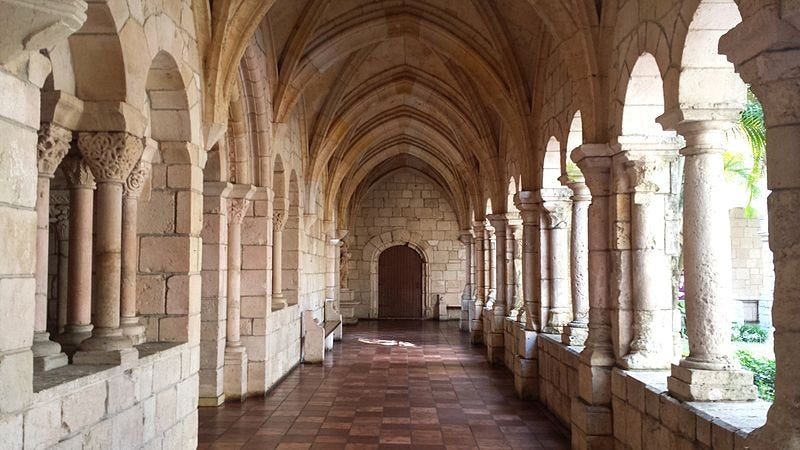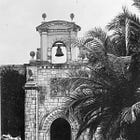Hello and happy Spring! This month’s newsletter is one of those things that is gonna sound like I made it up. The story is just that bizarre, but stay with me. Here goes.
Once upon a time (1133-1141 AD), there was a monastery built in Sacramenia, Spain. “Hang on a minute,” you say. “I thought this newsletter was about Florida.” Spoiler alert: that monastery is now in North Miami. How it got here is the interesting part.
A little context: during a social revolution in the 1830s those cloisters in Spain were confiscated and the order of monks that had been there for hundreds of years were forced to leave. The buildings were sold and converted to be a granary and stable for a while. Fast-forward to 1925 when the cloisters and outbuildings get purchased by William Randolph Hurst who was just looking for more pretty European things to add to his estate. The monastery was dismantled stone by stone, each piece labeled and numbered in 11,000 crates to be shipped to and reassembled in the United States.
Unfortunately, the timing for this endeavor was terrible. The crates did arrive in New York; however, concerned with an outbreak of hoof and mouth disease, officials ordered all the hay the stones were packed in to be burned to prevent possible transmission to American livestock. Apparently, the stones were not all put back in their correct boxes. So all the careful numbering and instructions for reassembly were essentially lost. Then came the Great Depression, which halted the project all together. The crates sat, abandoned in a warehouse in Brooklyn for 26 years. Hurst died in 1951 and as pieces of his estate were sold off, two entrepreneurs (Raymond Moss and William Edgemon) showed up to purchase the pieces of the monastery to create a new tourist attraction in South Florida. (Told you it was gonna end up here.)
The stones came south not much later, and after $1.5 million, 19 months and what Time magazine called “the biggest jigsaw puzzle in history,” St. Bernard de Clairvaux had been rebuilt on a six-acre site in North Miami and renamed the Ancient Spanish Monastery.
Its days as solely a tourist spot didn’t last. The monastery didn’t attract the crowds it needed to be profitable. In 1964 it was bought and donated to the Episcopal Church. It’s still an active Episcopalian Church today, the parish of St. Bernard de Clairvaux.
The cloisters represent early Gothic architecture and it’s definitely not something you see in South Florida. It’s a unique gem that’s popular for photography and weddings and such, but it’s worth a visit for no reason at all other than to stroll through the vaulted arcade and enjoy the courtyard. It’s a lot like stepping back in time. You can learn more about it on their website.
Now, my crazy mind can’t help but think that it would be an amazing book if those stones were never meant to be reassembled and that’s why the instructions were destroyed. Even darker: what if the tourist attraction plan failed because the only way to keep evil in those cursed stones at bay was for them to be blessed as a church once more? This didn’t happen until almost 10 years after it was reconstructed. So what happened during those 10 dreadful years? (In reality, probably not much, but in fiction, the possibilities are endless.)
Would anyone read this? No idea. Should I write it anyway? Probably. Expect an experimental prologue in the near future.
P.S. Want to see where that story goes? It’s already live.







Oh ho ho my friend, yes I absolutely want to read this 👀